
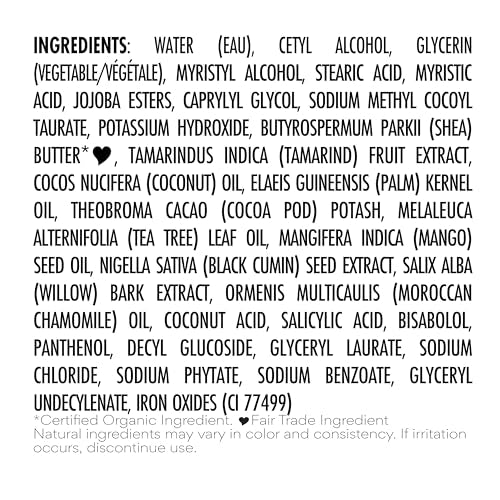
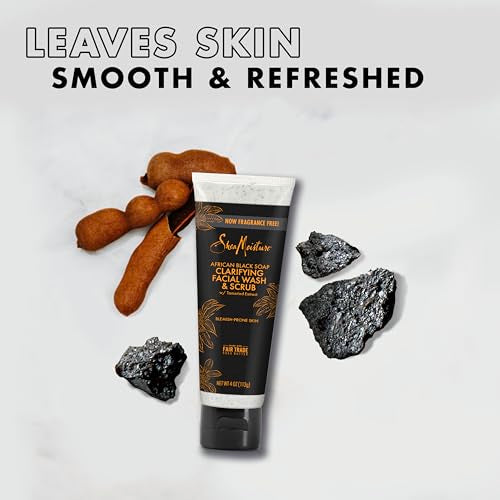
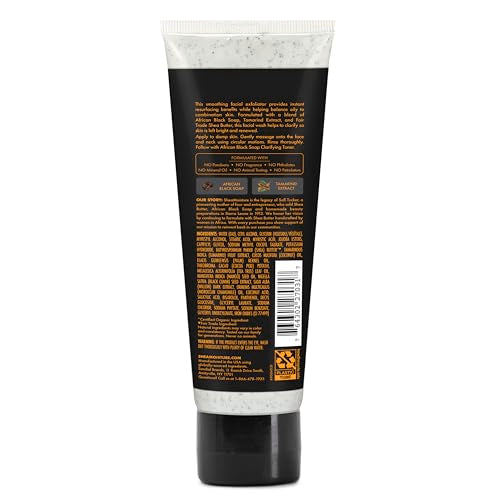
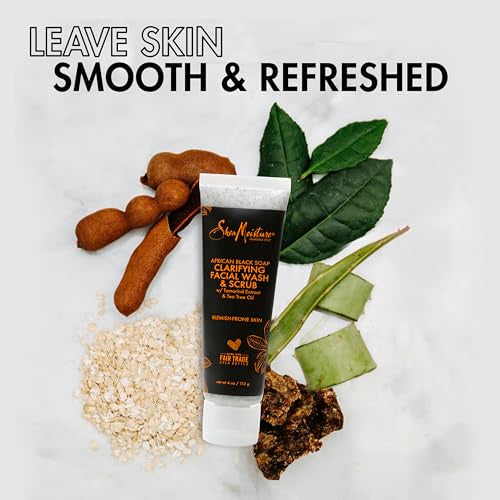
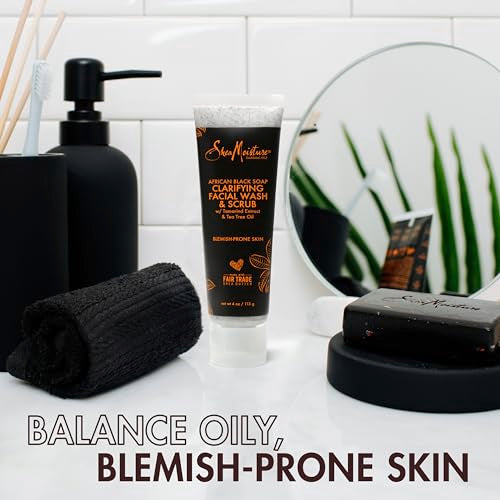
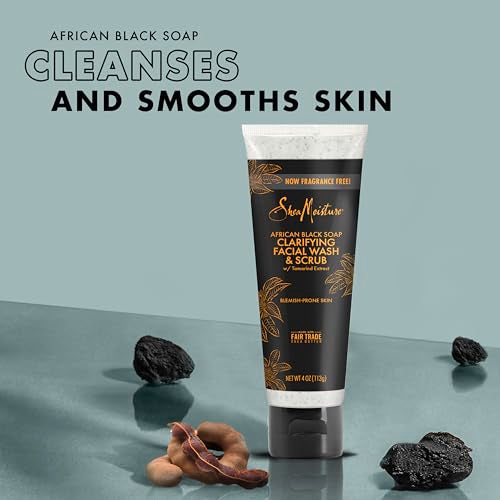

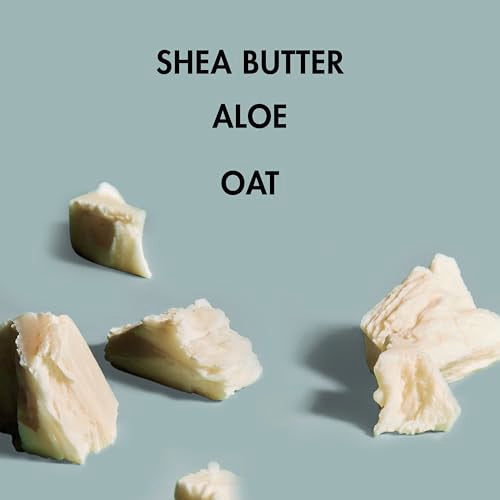

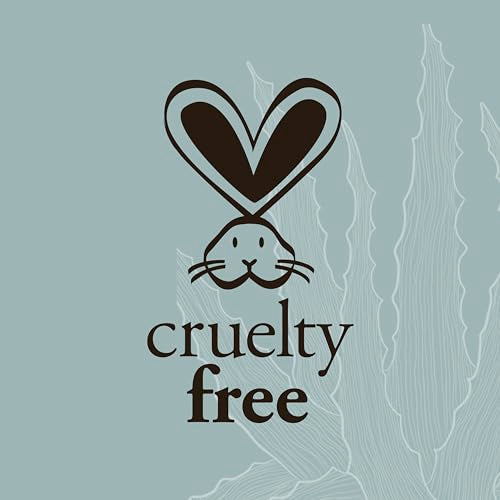
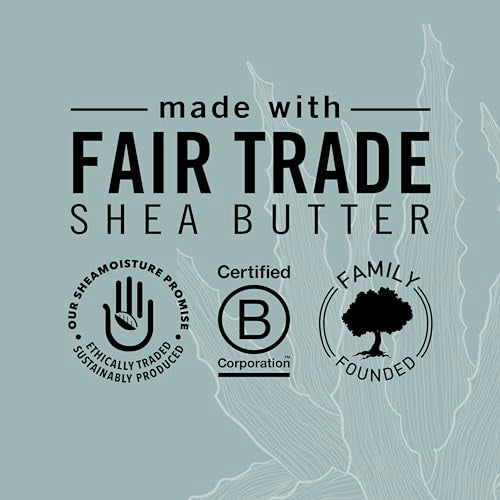
SheaMoisture Face Wash & Scrub - Clarifies Blemish-Prone Skin, Tea Tree Oil & Tamarind - 4oz


Salicylic Acid
High RiskSalicylic acid is a naturally occurring and synthetic compound primarily used in skincare products for its ability to exfoliate skin, unclog pores, and treat acne. It is a beta hydroxy acid (BHA) that penetrates the skin to effectively reduce inflammation and promote cell turnover.
Sustai Insights
Salicylic acid is recognized for its effective acne treatment properties and ability to enhance skin absorption, making it beneficial in various formulations. However, its use is subject to restrictions due to potential adverse health effects such as skin irritation and enhanced absorption risks. Regulatory bodies have cautioned against high concentrations, marking it as a high-risk ingredient. Special consideration should be given to sensitive populations, and safer alternatives like glycolic acid may be explored to minimize risks.
Potassium Hydroxide
High RiskPotassium hydroxide is a caustic inorganic base commonly used in various products for its ability to adjust pH levels and act as a cleaning agent. It is highly soluble in water and can produce heat upon dissolution, making it effective in certain formulations.
Sustai Insights
Potassium hydroxide serves as a strong pH adjuster and cleaning agent, but it poses significant health risks due to its caustic nature, which can cause irritation to skin and eyes. Environmental concerns include its potential to contribute to water pollution. Regulatory bodies have imposed strict usage restrictions due to these hazards, leading to a high-risk overall assessment. Safe handling practices are essential, and alternatives such as citric acid may provide safer pH adjustment without the associated risks.
Fragrance
High RiskFragrance refers to a mixture of aromatic compounds used in products to provide scent. It is commonly listed as 'fragrance' or 'parfum' on product labels and can serve various functions, including enhancing user experience and masking undesirable odors.
Sustai Insights
Fragrance offers functional benefits by improving product appeal; however, it poses significant health risks, notably a high likelihood of causing allergies and allergic contact dermatitis. Environmental risks include potential pollution and endocrine disruption, though its overall carcinogenicity is low. Regulatory bodies have noted concerns regarding its use, leading to a high-risk classification. Safe usage practices should be observed, and alternatives such as natural essential oils are recommended for those sensitive to synthetic fragrances.
Glyceryl Undecylenate
Medium RiskGlyceryl undecylenate is an ester of glycerin and undecylenic acid, commonly used as a skin-conditioning agent and emulsifier in cosmetic formulations. It aids in improving the texture and spreadability of products, contributing to their overall performance.
Sustai Insights
Glyceryl undecylenate offers functional benefits as an effective emulsifier and skin-conditioning agent. It is generally recognized as safe with low concerns regarding carcinogenicity, allergies, and reproductive toxicity. However, moderate use restrictions exist, and regulatory advisories should be considered. Environmental risks are minimal, with no significant pollutant or bioaccumulation potential noted. Overall, the risk assessment indicates a medium-level risk, making it essential to follow safe usage practices and consider alternatives like glycerin or natural oils for sustainability.
Bisabolol
Medium RiskBisabolol is a scent ingredient naturally occurring in various plants, particularly in chamomile. It is primarily used in cosmetics for its fragrance and potential skin-soothing properties, contributing to the overall sensory experience of personal care products.
Sustai Insights
Bisabolol offers functional benefits as a fragrance component and may provide skin-soothing effects. It is generally recognized for its low carcinogenic risk and low developmental toxicity, though moderate concerns exist regarding allergy potential. Bisabolol is also subject to certain restrictions in verified products. Environmental impacts are minimal, but it should be used with caution in sensitive populations. Overall, it poses a medium risk level based on current scientific understanding.
Glycerin
Medium RiskGlycerin (also called glycerol) is a naturally occurring compound commonly used in personal care and cosmetic products. It functions as a humectant, attracting moisture to the skin, and is also utilized as a solvent and emollient to enhance product texture and stability.
Sustai Insights
Glycerin is valued for its effective moisturizing properties and biodegradability, making it a widely accepted ingredient in formulations. It poses low health risks, including low concerns for carcinogenicity and allergies. However, moderate use restrictions exist due to regulatory guidelines. While glycerin does not significantly contribute to environmental pollution, its production process should be ethically sourced. Overall, glycerin holds a medium risk level, emphasizing the importance of safe usage practices and considering sustainable alternatives.
Melaleuca Alternifolia (Tea Tree) Leaf Extract
Low RiskMelaleuca alternifolia (tea tree) leaf extract is derived from the leaves of the tea tree plant, primarily known for its antimicrobial properties. It is commonly used in personal care products for its ability to cleanse and soothe skin, as well as for its role as a natural preservative.
Sustai Insights
Tea tree leaf extract offers functional benefits such as antimicrobial effects and skin soothing properties, making it a popular ingredient in various skincare formulations. It is considered low risk for health concerns, including carcinogenicity, allergies, and reproductive toxicity. Environmentally, it poses minimal risks, with no significant pollutant or bioaccumulation potential. Regulatory agencies have not imposed strict restrictions on its use. Safe usage practices include avoiding contact with eyes and using within established concentration limits. Overall, it is assessed as low risk; however, alternatives like lavender oil may also provide similar benefits.
Stearic Acid
Low RiskStearic acid is a naturally occurring fatty acid commonly found in animal and vegetable fats. It functions primarily as an emulsifier, thickener, and stabilizer in cosmetic and personal care products, providing texture and consistency.
Sustai Insights
Stearic acid offers functional benefits such as effective emulsification and stabilization of formulations. It is derived from renewable sources and is biodegradable, contributing to its sustainability profile. Health risks are low, with minimal concerns regarding carcinogenicity, allergies, or reproductive toxicity. Environmental risks are also low, with no significant pollutants or bioaccumulation concerns noted. Regulatory bodies, including the FDA, do not impose restrictions on its use. Overall, stearic acid is assessed as low risk, and its safe usage practices are well-established, with no significant alternatives needed.
Glyceryl Caprylate
Low RiskGlyceryl caprylate is a monoester of glycerin and caprylic acid, commonly used in cosmetics and personal care products as an emulsifier and skin-conditioning agent. It helps stabilize formulations and improve the texture and feel on the skin.
Sustai Insights
Glyceryl caprylate offers functional benefits as an effective emulsifier and skin-conditioning agent, enhancing product performance. It is biodegradable and considered sustainably sourced. Health risks are low, with minimal concerns regarding carcinogenicity, allergenic potential, and endocrine disruption. Environmental risks are also low, with no significant pollutant or bioaccumulation potential identified. Regulatory status is favorable, with no major restrictions. Overall, glyceryl caprylate maintains a low risk profile, making it a suitable ingredient for use in cosmetic formulations.
Salix Nigra (Black Willow) Bark Extract
Low RiskSalix nigra (black willow) bark extract is an extract derived from the bark of the black willow tree. It is commonly used in cosmetic and personal care products for its potential soothing properties and is recognized for its role in traditional medicine.
Sustai Insights
Salix nigra (black willow) bark extract offers functional benefits such as anti-inflammatory and soothing effects on the skin, making it useful in various formulations. It is sustainably sourced and biodegradable. Health risks associated with this ingredient are low, with no significant concerns regarding carcinogenicity, allergies, or reproductive toxicity. Environmental risks are minimal, and it is not subject to any restrictions from regulatory agencies. Overall, the ingredient is assessed as low risk, with safe usage practices encouraged. Alternative botanical extracts may provide similar benefits.
Myristyl Alcohol
Low RiskMyristyl alcohol is a fatty alcohol commonly used in cosmetic formulations. It functions primarily as an emollient, emulsifier, and thickening agent, contributing to the texture and consistency of products. It is derived from natural sources and is often included in skincare and haircare products.
Sustai Insights
Myristyl alcohol offers functional benefits such as enhancing product texture and stability. It is generally regarded as low risk concerning health impacts, with minimal concerns regarding carcinogenicity, allergies, or reproductive toxicity. Environmentally, it poses low pollutant potential and is not known to bioaccumulate. Regulatory agencies have not flagged significant safety issues. Safe usage practices should be followed, and while alternatives exist, myristyl alcohol is considered a low-risk ingredient overall.
Myristic Acid
Low RiskMyristic acid is an organic acid commonly used in cosmetic and personal care products as an emollient and surfactant. It helps to enhance texture and stability while providing moisturizing properties. Myristic acid is derived from natural sources, including coconut and palm oil.
Sustai Insights
Myristic acid serves as an effective emollient, enhancing product texture and moisture retention. It is generally regarded as safe with low concerns for carcinogenicity, allergies, and reproductive toxicity. However, environmental risks are minimal, and it is not considered bioaccumulative. Regulatory bodies, including the FDA, have not imposed significant restrictions on its use. Overall, the risk associated with myristic acid is low, making it a suitable ingredient for cosmetic formulations.
Mangifera Indica (Mango) Seed Oil
Low RiskMangifera indica (mango) seed oil is a fixed oil derived from the seeds of the mango fruit. It is commonly used in cosmetic formulations for its emollient properties, helping to moisturize and soften the skin. The oil is rich in fatty acids and antioxidants, contributing to its use in skin and hair care products.
Sustai Insights
Mangifera indica (mango) seed oil offers functional benefits as a moisturizer and emollient, promoting skin hydration without significant health risks. It is considered low risk for carcinogenicity, allergies, and developmental toxicity. Environmentally, it poses minimal pollution concerns and is not bioaccumulative. Regulatory assessments indicate no significant restrictions on its use. Safe usage practices include ensuring proper formulation concentrations. Overall, it is regarded as a low-risk ingredient with few health or environmental concerns, making it a suitable option in cosmetic products.
Sodium Palm Kernelate
Low RiskSodium palm kernelate is a sodium salt derived from palm kernel oil, commonly used in cosmetic formulations. It acts primarily as a surfactant and emulsifier, aiding in the cleansing and stabilization of products.
Sustai Insights
Sodium palm kernelate offers functional benefits as an effective surfactant and emulsifier, contributing to product stability and cleansing properties. Health risk assessments indicate low concerns regarding carcinogenicity, allergies, or developmental toxicity. Environmental impact is minimal, with no significant pollutant or bioaccumulation risks identified. Regulatory status shows no major restrictions, resulting in an overall low risk assessment. Safe usage practices should be followed, and alternatives like sodium cocoate can be considered for more sustainable options.
Tamarindus Indica Fruit Extract
Low RiskTamarindus indica fruit extract is derived from the tamarind tree's fruit. It is commonly used in cosmetic formulations for its potential antioxidant and soothing properties, serving primarily as a natural additive that enhances product texture and stability.
Sustai Insights
Tamarindus indica fruit extract offers functional benefits as a natural thickener and skin conditioning agent. It is generally recognized as safe with low health risks, including minimal concerns for carcinogenicity, allergies, and reproductive toxicity. Environmental impact is also low, with no significant pollutant potential noted. Regulatory agencies have not placed any restrictions on its use. Overall, it presents a low risk for consumers, making it a favorable ingredient in formulations. For those seeking alternatives, other plant extracts may provide similar benefits.
Polysorbate 60
Low RiskPolysorbate 60 (Tween-60) is a sorbitol-based non-ionic surfactant commonly used as an emulsifier and stabilizer in various cosmetic and food products. It helps to blend oil and water, enhancing texture and consistency.
Sustai Insights
Polysorbate 60 offers functional benefits as an effective emulsifier, promoting product stability and texture. It is generally considered safe with low concerns regarding cancer, allergies, and reproductive toxicity. Environmental risks are minimal, with no significant pollutant or bioaccumulation potential. Regulatory bodies have not issued severe warnings, indicating a low overall risk. Safe usage practices include adhering to recommended concentrations, with alternatives like glyceryl stearate available for those seeking more sustainable options.
Coconut Fatty Acid
Low RiskCoconut fatty acid is a mixture of fatty acids derived from coconut oil, primarily composed of caprylic and capric acids. It is commonly used in cosmetic formulations for its emollient properties, helping to moisturize and soften the skin.
Sustai Insights
Coconut fatty acid serves as an effective emollient, enhancing skin hydration and texture. It is considered to have low health risks, with minimal concerns regarding carcinogenicity, allergenic potential, and reproductive toxicity. Environmentally, it is not recognized as a pollutant or bioaccumulative. Regulatory bodies do not impose significant restrictions on its use. Overall, the ingredient poses low risk, and its safe application in cosmetic products is supported by its favorable profile.
Sodium Lauroyl Lactylate
Low RiskSodium lauroyl lactylate is a sodium salt of lauric acid and lactyl lactate, primarily used in cosmetic formulations as an emulsifier and skin conditioning agent. It helps to enhance the texture and stability of products while also promoting skin feel.
Sustai Insights
Sodium lauroyl lactylate is valued for its emulsifying properties, improving product texture and stability. It is considered biodegradable and sustainably sourced, contributing to eco-friendliness. Health risks are low, with minimal concerns regarding carcinogenicity, allergenic potential, and reproductive toxicity. Environmental risks are also low, with no significant bioaccumulation or pollution potential identified. Regulatory bodies have not imposed restrictions on its use. Overall, this ingredient presents a low risk profile, making it a suitable choice for cosmetic formulations.
Theobroma Cacao (Cacao) Extract
Low RiskTheobroma cacao (cacao) extract is an extract derived from the cacao bean, commonly used in cosmetic products for its antioxidant properties and potential skin benefits. It is often included in formulations for its emollient qualities and ability to enhance product texture.
Sustai Insights
Theobroma cacao extract offers functional benefits as a moisturizer and antioxidant, contributing to skin hydration and protection. It is sustainably sourced and biodegradable. Health risks are minimal, with low concerns for carcinogenicity, allergies, or developmental toxicity. Environmental risks are also low, with no significant pollution or bioaccumulation. Regulatory agencies such as the FDA do not impose restrictions on its use. Overall, the ingredient presents a low risk, making it a suitable choice in cosmetic formulations.
Sodium Sheabutteramphoacetate
Low RiskSodium Sheabutteramphoacetate is a surfactant derived from shea butter, primarily used in personal care products for its cleansing and conditioning properties. It helps to create lather and improve the texture of formulations, making it suitable for shampoos and body washes.
Sustai Insights
Sodium Sheabutteramphoacetate serves as an effective surfactant and conditioning agent, contributing to product stability and performance. It is biodegradable and sourced from renewable materials, aligning with sustainability goals. Health risks are minimal, with low concerns for carcinogenicity, allergies, or reproductive toxicity. Environmental impact is also low, with no significant pollutant or bioaccumulation potential. Regulatory bodies do not impose restrictions, supporting its safe use. Overall, it has a low risk profile, making it a viable ingredient in personal care formulations.
Jojoba Esters
Low RiskJojoba esters are a complex mixture of esters produced from the oil of the jojoba plant (Simmondsia chinensis). They serve primarily as emollients and skin conditioning agents in cosmetic formulations, enhancing texture and moisture retention.
Sustai Insights
Jojoba esters provide effective moisturizing properties, contributing to skin conditioning and improving product feel. They are sustainably sourced and biodegradable, posing low risk for carcinogenicity, allergies, and developmental toxicity. Environmental risks are minimal, with no significant pollutants or bioaccumulation concerns. Regulatory agencies have not imposed restrictions, indicating a low overall risk assessment. Safe usage practices should include monitoring for any allergic reactions, although such occurrences are rare. Alternatives, such as synthetic emollients, may be considered, but jojoba esters remain a low-risk option.
Ormenis Multicaulis Oil
Low RiskOrmenis multicaulis oil is a volatile oil obtained from the Ormenis multicaulis plant, primarily used for its aromatic properties in various products. It is known for its potential applications in fragrance formulation and as a natural component in cosmetic products.
Sustai Insights
Ormenis multicaulis oil offers functional benefits as a natural fragrance component and is generally considered to have low health risks, including low concerns for carcinogenicity, allergies, and reproductive toxicity. Environmentally, it is not recognized as a pollutant or bioaccumulative. Regulatory bodies have not placed significant restrictions on its use. However, allergic contact dermatitis has been noted in specific cases. Overall, the ingredient presents a low-risk profile, making it a viable option in cosmetic formulations.
Decyl Glucoside
Low RiskDecyl glucoside is a glucose-based surfactant derived from natural sources, primarily used as a mild cleansing agent in personal care products. It effectively reduces surface tension, allowing for improved mixing of ingredients and enhanced cleansing properties without stripping natural oils from the skin.
Sustai Insights
Decyl glucoside offers functional benefits as a non-ionic surfactant, making it suitable for sensitive skin formulations. It is biodegradable and derived from renewable resources, supporting sustainability. Health risks are primarily low, with minimal concerns regarding irritation and allergies. Environmental risks are low, as it does not significantly contribute to pollution or bioaccumulation. Regulatory status is generally favorable, with low restrictions noted. Overall, decyl glucoside presents a low risk for use in consumer products, making it a suitable choice for gentle formulations.
Sodium Cocoate
Low RiskSodium cocoate is the sodium salt of fatty acids derived from coconut oil. It is primarily used in cosmetic formulations as a surfactant and cleansing agent, effectively helping to emulsify oils and fats, contributing to the overall texture and performance of the product.
Sustai Insights
Sodium cocoate acts as an effective surfactant and cleansing agent, offering functional benefits in personal care products. It is biodegradable and derived from renewable sources, contributing to sustainability. Health risks are low, as it is not associated with carcinogenicity, significant allergenic potential, or reproductive toxicity. However, it may cause mild irritation to skin, eyes, or lungs. Regulatory bodies have not imposed significant restrictions, affirming its safety for use. Overall, it presents a low-risk profile, making it a suitable choice in formulations.
Nigella Sativa (Black Cumin) Seed Oil
Low RiskNigella sativa (black cumin) seed oil is an oil extracted from the seeds of the Nigella sativa plant, commonly used in cosmetic and therapeutic applications. It is known for its rich fatty acid profile and bioactive compounds, which contribute to its various uses in skincare and health products.
Sustai Insights
Nigella sativa seed oil offers functional benefits such as moisturizing properties and potential antioxidant effects, making it a valuable ingredient in skincare formulations. It is sustainably sourced and biodegradable, contributing positively to environmental considerations. Health risks are minimal, with low concerns regarding carcinogenicity, allergies, or reproductive toxicity. Regulatory bodies do not impose significant restrictions on its use. Overall, this ingredient presents a low risk for both health and environmental impact, making it a safe choice in formulations.
Water
Low RiskWater is a clear, colorless liquid essential for various biological processes. It serves as a solvent in formulations, facilitating the dissolution of other ingredients and enhancing product texture and application. Additionally, water plays a crucial role in hydration and is a key component in many cosmetic and personal care products.
Sustai Insights
Water is an effective solvent and hydrator, contributing to the texture and efficacy of formulations. It is biodegradable and generally regarded as safe, with low concerns regarding carcinogenicity, allergies, and reproductive toxicity. However, excessive water usage can lead to environmental concerns, particularly regarding resource depletion. Regulatory bodies do not impose restrictions on water use in cosmetics. Overall, the risks associated with water are low, making it a safe and essential ingredient.
Panthenol
Low RiskPanthenol, a derivative of vitamin B5, is commonly used in cosmetic formulations for its moisturizing and skin-conditioning properties. It acts as a humectant, helping to retain moisture in the skin and hair, thereby improving hydration and texture.
Sustai Insights
Panthenol offers functional benefits such as effective hydration and skin conditioning, making it valuable in various cosmetic products. It is considered low risk regarding health impacts, with minimal concerns about carcinogenicity, allergies, or reproductive toxicity. Environmental risks are also low, with no significant pollutant or bioaccumulation potential. Regulatory bodies have not imposed restrictions on its use. Safe usage practices include adhering to recommended concentrations. Alternatives like glycerin may provide similar moisturizing benefits, but overall, panthenol is assessed as a low-risk ingredient.
Cetyl Alcohol
Low RiskCetyl alcohol is a long-chain organic alcohol commonly used in cosmetic formulations. It serves as an emollient, emulsifier, and thickening agent, enhancing the texture and stability of products. Cetyl alcohol is derived from natural sources, such as coconut or palm oil, and is often included in creams, lotions, and hair conditioners.
Sustai Insights
Cetyl alcohol offers functional benefits as an emollient and emulsifier, improving product texture and stability. It is biodegradable and sourced from renewable materials, contributing to sustainability. Health risks are minimal, with low concerns for carcinogenicity, allergies, or reproductive toxicity. Environmental impact is also low, with no significant pollutant or bioaccumulation potential. Regulatory bodies have not placed restrictions on its use, indicating a favorable safety profile. Overall, cetyl alcohol is assessed as low risk, and safe usage practices include ensuring proper formulation concentrations.
Butyrospermum Parkii (Shea) Butter
Low RiskButyrospermum parkii (shea) butter is a vegetable fat derived from the nuts of the shea tree. It is commonly used in cosmetic formulations for its emollient properties, providing moisture and improving skin texture. Additionally, shea butter is known for its ability to enhance the stability of products and deliver a creamy texture.
Sustai Insights
Shea butter offers functional benefits as an effective moisturizer, enhancing skin barrier function and texture. It is sustainably sourced and biodegradable, contributing to eco-friendliness. Health-wise, it is associated with low risks for carcinogenicity, allergies, and reproductive toxicity. Environmental impacts are minimal, with no significant pollutant potential identified. Regulatory assessments indicate no current restrictions. Overall, the ingredient presents a low risk, making it a favorable choice in cosmetic formulations.
Glyceryl Undecylenate
Medium RiskGlyceryl undecylenate is an ester of glycerin and undecylenic acid, commonly used as a skin-conditioning agent and emulsifier in cosmetic formulations. It aids in improving the texture and spreadability of products, contributing to their overall performance.
Sustai Insights
Glyceryl undecylenate offers functional benefits as an effective emulsifier and skin-conditioning agent. It is generally recognized as safe with low concerns regarding carcinogenicity, allergies, and reproductive toxicity. However, moderate use restrictions exist, and regulatory advisories should be considered. Environmental risks are minimal, with no significant pollutant or bioaccumulation potential noted. Overall, the risk assessment indicates a medium-level risk, making it essential to follow safe usage practices and consider alternatives like glycerin or natural oils for sustainability.
Melaleuca Alternifolia (Tea Tree) Leaf Extract
Low RiskMelaleuca alternifolia (tea tree) leaf extract is derived from the leaves of the tea tree plant, primarily known for its antimicrobial properties. It is commonly used in personal care products for its ability to cleanse and soothe skin, as well as for its role as a natural preservative.
Sustai Insights
Tea tree leaf extract offers functional benefits such as antimicrobial effects and skin soothing properties, making it a popular ingredient in various skincare formulations. It is considered low risk for health concerns, including carcinogenicity, allergies, and reproductive toxicity. Environmentally, it poses minimal risks, with no significant pollutant or bioaccumulation potential. Regulatory agencies have not imposed strict restrictions on its use. Safe usage practices include avoiding contact with eyes and using within established concentration limits. Overall, it is assessed as low risk; however, alternatives like lavender oil may also provide similar benefits.
Stearic Acid
Low RiskStearic acid is a naturally occurring fatty acid commonly found in animal and vegetable fats. It functions primarily as an emulsifier, thickener, and stabilizer in cosmetic and personal care products, providing texture and consistency.
Sustai Insights
Stearic acid offers functional benefits such as effective emulsification and stabilization of formulations. It is derived from renewable sources and is biodegradable, contributing to its sustainability profile. Health risks are low, with minimal concerns regarding carcinogenicity, allergies, or reproductive toxicity. Environmental risks are also low, with no significant pollutants or bioaccumulation concerns noted. Regulatory bodies, including the FDA, do not impose restrictions on its use. Overall, stearic acid is assessed as low risk, and its safe usage practices are well-established, with no significant alternatives needed.
Glyceryl Caprylate
Low RiskGlyceryl caprylate is a monoester of glycerin and caprylic acid, commonly used in cosmetics and personal care products as an emulsifier and skin-conditioning agent. It helps stabilize formulations and improve the texture and feel on the skin.
Sustai Insights
Glyceryl caprylate offers functional benefits as an effective emulsifier and skin-conditioning agent, enhancing product performance. It is biodegradable and considered sustainably sourced. Health risks are low, with minimal concerns regarding carcinogenicity, allergenic potential, and endocrine disruption. Environmental risks are also low, with no significant pollutant or bioaccumulation potential identified. Regulatory status is favorable, with no major restrictions. Overall, glyceryl caprylate maintains a low risk profile, making it a suitable ingredient for use in cosmetic formulations.
Salix Nigra (Black Willow) Bark Extract
Low RiskSalix nigra (black willow) bark extract is an extract derived from the bark of the black willow tree. It is commonly used in cosmetic and personal care products for its potential soothing properties and is recognized for its role in traditional medicine.
Sustai Insights
Salix nigra (black willow) bark extract offers functional benefits such as anti-inflammatory and soothing effects on the skin, making it useful in various formulations. It is sustainably sourced and biodegradable. Health risks associated with this ingredient are low, with no significant concerns regarding carcinogenicity, allergies, or reproductive toxicity. Environmental risks are minimal, and it is not subject to any restrictions from regulatory agencies. Overall, the ingredient is assessed as low risk, with safe usage practices encouraged. Alternative botanical extracts may provide similar benefits.
Bisabolol
Medium RiskBisabolol is a scent ingredient naturally occurring in various plants, particularly in chamomile. It is primarily used in cosmetics for its fragrance and potential skin-soothing properties, contributing to the overall sensory experience of personal care products.
Sustai Insights
Bisabolol offers functional benefits as a fragrance component and may provide skin-soothing effects. It is generally recognized for its low carcinogenic risk and low developmental toxicity, though moderate concerns exist regarding allergy potential. Bisabolol is also subject to certain restrictions in verified products. Environmental impacts are minimal, but it should be used with caution in sensitive populations. Overall, it poses a medium risk level based on current scientific understanding.
Salicylic Acid
High RiskSalicylic acid is a naturally occurring and synthetic compound primarily used in skincare products for its ability to exfoliate skin, unclog pores, and treat acne. It is a beta hydroxy acid (BHA) that penetrates the skin to effectively reduce inflammation and promote cell turnover.
Sustai Insights
Salicylic acid is recognized for its effective acne treatment properties and ability to enhance skin absorption, making it beneficial in various formulations. However, its use is subject to restrictions due to potential adverse health effects such as skin irritation and enhanced absorption risks. Regulatory bodies have cautioned against high concentrations, marking it as a high-risk ingredient. Special consideration should be given to sensitive populations, and safer alternatives like glycolic acid may be explored to minimize risks.
Myristyl Alcohol
Low RiskMyristyl alcohol is a fatty alcohol commonly used in cosmetic formulations. It functions primarily as an emollient, emulsifier, and thickening agent, contributing to the texture and consistency of products. It is derived from natural sources and is often included in skincare and haircare products.
Sustai Insights
Myristyl alcohol offers functional benefits such as enhancing product texture and stability. It is generally regarded as low risk concerning health impacts, with minimal concerns regarding carcinogenicity, allergies, or reproductive toxicity. Environmentally, it poses low pollutant potential and is not known to bioaccumulate. Regulatory agencies have not flagged significant safety issues. Safe usage practices should be followed, and while alternatives exist, myristyl alcohol is considered a low-risk ingredient overall.
Myristic Acid
Low RiskMyristic acid is an organic acid commonly used in cosmetic and personal care products as an emollient and surfactant. It helps to enhance texture and stability while providing moisturizing properties. Myristic acid is derived from natural sources, including coconut and palm oil.
Sustai Insights
Myristic acid serves as an effective emollient, enhancing product texture and moisture retention. It is generally regarded as safe with low concerns for carcinogenicity, allergies, and reproductive toxicity. However, environmental risks are minimal, and it is not considered bioaccumulative. Regulatory bodies, including the FDA, have not imposed significant restrictions on its use. Overall, the risk associated with myristic acid is low, making it a suitable ingredient for cosmetic formulations.
Mangifera Indica (Mango) Seed Oil
Low RiskMangifera indica (mango) seed oil is a fixed oil derived from the seeds of the mango fruit. It is commonly used in cosmetic formulations for its emollient properties, helping to moisturize and soften the skin. The oil is rich in fatty acids and antioxidants, contributing to its use in skin and hair care products.
Sustai Insights
Mangifera indica (mango) seed oil offers functional benefits as a moisturizer and emollient, promoting skin hydration without significant health risks. It is considered low risk for carcinogenicity, allergies, and developmental toxicity. Environmentally, it poses minimal pollution concerns and is not bioaccumulative. Regulatory assessments indicate no significant restrictions on its use. Safe usage practices include ensuring proper formulation concentrations. Overall, it is regarded as a low-risk ingredient with few health or environmental concerns, making it a suitable option in cosmetic products.
Sodium Palm Kernelate
Low RiskSodium palm kernelate is a sodium salt derived from palm kernel oil, commonly used in cosmetic formulations. It acts primarily as a surfactant and emulsifier, aiding in the cleansing and stabilization of products.
Sustai Insights
Sodium palm kernelate offers functional benefits as an effective surfactant and emulsifier, contributing to product stability and cleansing properties. Health risk assessments indicate low concerns regarding carcinogenicity, allergies, or developmental toxicity. Environmental impact is minimal, with no significant pollutant or bioaccumulation risks identified. Regulatory status shows no major restrictions, resulting in an overall low risk assessment. Safe usage practices should be followed, and alternatives like sodium cocoate can be considered for more sustainable options.
Tamarindus Indica Fruit Extract
Low RiskTamarindus indica fruit extract is derived from the tamarind tree's fruit. It is commonly used in cosmetic formulations for its potential antioxidant and soothing properties, serving primarily as a natural additive that enhances product texture and stability.
Sustai Insights
Tamarindus indica fruit extract offers functional benefits as a natural thickener and skin conditioning agent. It is generally recognized as safe with low health risks, including minimal concerns for carcinogenicity, allergies, and reproductive toxicity. Environmental impact is also low, with no significant pollutant potential noted. Regulatory agencies have not placed any restrictions on its use. Overall, it presents a low risk for consumers, making it a favorable ingredient in formulations. For those seeking alternatives, other plant extracts may provide similar benefits.
Potassium Hydroxide
High RiskPotassium hydroxide is a caustic inorganic base commonly used in various products for its ability to adjust pH levels and act as a cleaning agent. It is highly soluble in water and can produce heat upon dissolution, making it effective in certain formulations.
Sustai Insights
Potassium hydroxide serves as a strong pH adjuster and cleaning agent, but it poses significant health risks due to its caustic nature, which can cause irritation to skin and eyes. Environmental concerns include its potential to contribute to water pollution. Regulatory bodies have imposed strict usage restrictions due to these hazards, leading to a high-risk overall assessment. Safe handling practices are essential, and alternatives such as citric acid may provide safer pH adjustment without the associated risks.
Polysorbate 60
Low RiskPolysorbate 60 (Tween-60) is a sorbitol-based non-ionic surfactant commonly used as an emulsifier and stabilizer in various cosmetic and food products. It helps to blend oil and water, enhancing texture and consistency.
Sustai Insights
Polysorbate 60 offers functional benefits as an effective emulsifier, promoting product stability and texture. It is generally considered safe with low concerns regarding cancer, allergies, and reproductive toxicity. Environmental risks are minimal, with no significant pollutant or bioaccumulation potential. Regulatory bodies have not issued severe warnings, indicating a low overall risk. Safe usage practices include adhering to recommended concentrations, with alternatives like glyceryl stearate available for those seeking more sustainable options.
Coconut Fatty Acid
Low RiskCoconut fatty acid is a mixture of fatty acids derived from coconut oil, primarily composed of caprylic and capric acids. It is commonly used in cosmetic formulations for its emollient properties, helping to moisturize and soften the skin.
Sustai Insights
Coconut fatty acid serves as an effective emollient, enhancing skin hydration and texture. It is considered to have low health risks, with minimal concerns regarding carcinogenicity, allergenic potential, and reproductive toxicity. Environmentally, it is not recognized as a pollutant or bioaccumulative. Regulatory bodies do not impose significant restrictions on its use. Overall, the ingredient poses low risk, and its safe application in cosmetic products is supported by its favorable profile.
Sodium Lauroyl Lactylate
Low RiskSodium lauroyl lactylate is a sodium salt of lauric acid and lactyl lactate, primarily used in cosmetic formulations as an emulsifier and skin conditioning agent. It helps to enhance the texture and stability of products while also promoting skin feel.
Sustai Insights
Sodium lauroyl lactylate is valued for its emulsifying properties, improving product texture and stability. It is considered biodegradable and sustainably sourced, contributing to eco-friendliness. Health risks are low, with minimal concerns regarding carcinogenicity, allergenic potential, and reproductive toxicity. Environmental risks are also low, with no significant bioaccumulation or pollution potential identified. Regulatory bodies have not imposed restrictions on its use. Overall, this ingredient presents a low risk profile, making it a suitable choice for cosmetic formulations.
Theobroma Cacao (Cacao) Extract
Low RiskTheobroma cacao (cacao) extract is an extract derived from the cacao bean, commonly used in cosmetic products for its antioxidant properties and potential skin benefits. It is often included in formulations for its emollient qualities and ability to enhance product texture.
Sustai Insights
Theobroma cacao extract offers functional benefits as a moisturizer and antioxidant, contributing to skin hydration and protection. It is sustainably sourced and biodegradable. Health risks are minimal, with low concerns for carcinogenicity, allergies, or developmental toxicity. Environmental risks are also low, with no significant pollution or bioaccumulation. Regulatory agencies such as the FDA do not impose restrictions on its use. Overall, the ingredient presents a low risk, making it a suitable choice in cosmetic formulations.
Sodium Sheabutteramphoacetate
Low RiskSodium Sheabutteramphoacetate is a surfactant derived from shea butter, primarily used in personal care products for its cleansing and conditioning properties. It helps to create lather and improve the texture of formulations, making it suitable for shampoos and body washes.
Sustai Insights
Sodium Sheabutteramphoacetate serves as an effective surfactant and conditioning agent, contributing to product stability and performance. It is biodegradable and sourced from renewable materials, aligning with sustainability goals. Health risks are minimal, with low concerns for carcinogenicity, allergies, or reproductive toxicity. Environmental impact is also low, with no significant pollutant or bioaccumulation potential. Regulatory bodies do not impose restrictions, supporting its safe use. Overall, it has a low risk profile, making it a viable ingredient in personal care formulations.
Jojoba Esters
Low RiskJojoba esters are a complex mixture of esters produced from the oil of the jojoba plant (Simmondsia chinensis). They serve primarily as emollients and skin conditioning agents in cosmetic formulations, enhancing texture and moisture retention.
Sustai Insights
Jojoba esters provide effective moisturizing properties, contributing to skin conditioning and improving product feel. They are sustainably sourced and biodegradable, posing low risk for carcinogenicity, allergies, and developmental toxicity. Environmental risks are minimal, with no significant pollutants or bioaccumulation concerns. Regulatory agencies have not imposed restrictions, indicating a low overall risk assessment. Safe usage practices should include monitoring for any allergic reactions, although such occurrences are rare. Alternatives, such as synthetic emollients, may be considered, but jojoba esters remain a low-risk option.
Ormenis Multicaulis Oil
Low RiskOrmenis multicaulis oil is a volatile oil obtained from the Ormenis multicaulis plant, primarily used for its aromatic properties in various products. It is known for its potential applications in fragrance formulation and as a natural component in cosmetic products.
Sustai Insights
Ormenis multicaulis oil offers functional benefits as a natural fragrance component and is generally considered to have low health risks, including low concerns for carcinogenicity, allergies, and reproductive toxicity. Environmentally, it is not recognized as a pollutant or bioaccumulative. Regulatory bodies have not placed significant restrictions on its use. However, allergic contact dermatitis has been noted in specific cases. Overall, the ingredient presents a low-risk profile, making it a viable option in cosmetic formulations.
Decyl Glucoside
Low RiskDecyl glucoside is a glucose-based surfactant derived from natural sources, primarily used as a mild cleansing agent in personal care products. It effectively reduces surface tension, allowing for improved mixing of ingredients and enhanced cleansing properties without stripping natural oils from the skin.
Sustai Insights
Decyl glucoside offers functional benefits as a non-ionic surfactant, making it suitable for sensitive skin formulations. It is biodegradable and derived from renewable resources, supporting sustainability. Health risks are primarily low, with minimal concerns regarding irritation and allergies. Environmental risks are low, as it does not significantly contribute to pollution or bioaccumulation. Regulatory status is generally favorable, with low restrictions noted. Overall, decyl glucoside presents a low risk for use in consumer products, making it a suitable choice for gentle formulations.
Sodium Cocoate
Low RiskSodium cocoate is the sodium salt of fatty acids derived from coconut oil. It is primarily used in cosmetic formulations as a surfactant and cleansing agent, effectively helping to emulsify oils and fats, contributing to the overall texture and performance of the product.
Sustai Insights
Sodium cocoate acts as an effective surfactant and cleansing agent, offering functional benefits in personal care products. It is biodegradable and derived from renewable sources, contributing to sustainability. Health risks are low, as it is not associated with carcinogenicity, significant allergenic potential, or reproductive toxicity. However, it may cause mild irritation to skin, eyes, or lungs. Regulatory bodies have not imposed significant restrictions, affirming its safety for use. Overall, it presents a low-risk profile, making it a suitable choice in formulations.
Nigella Sativa (Black Cumin) Seed Oil
Low RiskNigella sativa (black cumin) seed oil is an oil extracted from the seeds of the Nigella sativa plant, commonly used in cosmetic and therapeutic applications. It is known for its rich fatty acid profile and bioactive compounds, which contribute to its various uses in skincare and health products.
Sustai Insights
Nigella sativa seed oil offers functional benefits such as moisturizing properties and potential antioxidant effects, making it a valuable ingredient in skincare formulations. It is sustainably sourced and biodegradable, contributing positively to environmental considerations. Health risks are minimal, with low concerns regarding carcinogenicity, allergies, or reproductive toxicity. Regulatory bodies do not impose significant restrictions on its use. Overall, this ingredient presents a low risk for both health and environmental impact, making it a safe choice in formulations.
Water
Low RiskWater is a clear, colorless liquid essential for various biological processes. It serves as a solvent in formulations, facilitating the dissolution of other ingredients and enhancing product texture and application. Additionally, water plays a crucial role in hydration and is a key component in many cosmetic and personal care products.
Sustai Insights
Water is an effective solvent and hydrator, contributing to the texture and efficacy of formulations. It is biodegradable and generally regarded as safe, with low concerns regarding carcinogenicity, allergies, and reproductive toxicity. However, excessive water usage can lead to environmental concerns, particularly regarding resource depletion. Regulatory bodies do not impose restrictions on water use in cosmetics. Overall, the risks associated with water are low, making it a safe and essential ingredient.
Glycerin
Medium RiskGlycerin (also called glycerol) is a naturally occurring compound commonly used in personal care and cosmetic products. It functions as a humectant, attracting moisture to the skin, and is also utilized as a solvent and emollient to enhance product texture and stability.
Sustai Insights
Glycerin is valued for its effective moisturizing properties and biodegradability, making it a widely accepted ingredient in formulations. It poses low health risks, including low concerns for carcinogenicity and allergies. However, moderate use restrictions exist due to regulatory guidelines. While glycerin does not significantly contribute to environmental pollution, its production process should be ethically sourced. Overall, glycerin holds a medium risk level, emphasizing the importance of safe usage practices and considering sustainable alternatives.
Fragrance
High RiskFragrance refers to a mixture of aromatic compounds used in products to provide scent. It is commonly listed as 'fragrance' or 'parfum' on product labels and can serve various functions, including enhancing user experience and masking undesirable odors.
Sustai Insights
Fragrance offers functional benefits by improving product appeal; however, it poses significant health risks, notably a high likelihood of causing allergies and allergic contact dermatitis. Environmental risks include potential pollution and endocrine disruption, though its overall carcinogenicity is low. Regulatory bodies have noted concerns regarding its use, leading to a high-risk classification. Safe usage practices should be observed, and alternatives such as natural essential oils are recommended for those sensitive to synthetic fragrances.
Panthenol
Low RiskPanthenol, a derivative of vitamin B5, is commonly used in cosmetic formulations for its moisturizing and skin-conditioning properties. It acts as a humectant, helping to retain moisture in the skin and hair, thereby improving hydration and texture.
Sustai Insights
Panthenol offers functional benefits such as effective hydration and skin conditioning, making it valuable in various cosmetic products. It is considered low risk regarding health impacts, with minimal concerns about carcinogenicity, allergies, or reproductive toxicity. Environmental risks are also low, with no significant pollutant or bioaccumulation potential. Regulatory bodies have not imposed restrictions on its use. Safe usage practices include adhering to recommended concentrations. Alternatives like glycerin may provide similar moisturizing benefits, but overall, panthenol is assessed as a low-risk ingredient.
Cetyl Alcohol
Low RiskCetyl alcohol is a long-chain organic alcohol commonly used in cosmetic formulations. It serves as an emollient, emulsifier, and thickening agent, enhancing the texture and stability of products. Cetyl alcohol is derived from natural sources, such as coconut or palm oil, and is often included in creams, lotions, and hair conditioners.
Sustai Insights
Cetyl alcohol offers functional benefits as an emollient and emulsifier, improving product texture and stability. It is biodegradable and sourced from renewable materials, contributing to sustainability. Health risks are minimal, with low concerns for carcinogenicity, allergies, or reproductive toxicity. Environmental impact is also low, with no significant pollutant or bioaccumulation potential. Regulatory bodies have not placed restrictions on its use, indicating a favorable safety profile. Overall, cetyl alcohol is assessed as low risk, and safe usage practices include ensuring proper formulation concentrations.
Butyrospermum Parkii (Shea) Butter
Low RiskButyrospermum parkii (shea) butter is a vegetable fat derived from the nuts of the shea tree. It is commonly used in cosmetic formulations for its emollient properties, providing moisture and improving skin texture. Additionally, shea butter is known for its ability to enhance the stability of products and deliver a creamy texture.
Sustai Insights
Shea butter offers functional benefits as an effective moisturizer, enhancing skin barrier function and texture. It is sustainably sourced and biodegradable, contributing to eco-friendliness. Health-wise, it is associated with low risks for carcinogenicity, allergies, and reproductive toxicity. Environmental impacts are minimal, with no significant pollutant potential identified. Regulatory assessments indicate no current restrictions. Overall, the ingredient presents a low risk, making it a favorable choice in cosmetic formulations.
Experience the transformative power of SheaMoisture's Facial Wash and Scrub with African Black Soap, specially formulated for blemish-prone skin. This 4 oz cleanser not only purifies but also exfoliates, leaving your complexion bright and renewed.
- Clarifying Formula: Infused with African Black Soap and Tamarind Extract, it effectively resurfaces the skin for a vibrant glow.
- Gentle Exfoliation: The blend with Tea Tree Oil helps to soothe and mattify, making it perfect for daily use.
- Natural Ingredients: Free from parabens, phthalates, mineral oil, and sulfates, ensuring a safe and gentle cleanse.
- Easy Application: Simply massage onto damp skin in circular motions for optimal results, then rinse thoroughly.
- Daily Routine Essential: Ideal as the first step in your skincare routine, it balances and refreshes skin morning and night.
Elevate your cleansing ritual while supporting your skin’s health and the planet with SheaMoisture’s ethical practices.
Subscribe & Save with Sustai
- Best Price Guarantee: Always enjoy the lowest prices on sustainable home essentials.
- No Surprises: We’ll notify you before shipping. No hidden fees, ever.
- You’re in Charge: Change, pause, or cancel your subscription anytime with ease.
- Eco-Friendly Deliveries: Our grouped shipments mean less packaging and lower emissions.
Join us on a sustainable journey. Special offers for a limited time! Prices and promotions may change.
Recommended Products
Experience the transformative power of SheaMoisture's Facial Wash and Scrub with African Black Soap, specially formulated for blemish-prone skin. This 4 oz cleanser not only purifies but also exfoliates, leaving your complexion bright and renewed.
- Clarifying Formula: Infused with African Black Soap and Tamarind Extract, it effectively resurfaces the skin for a vibrant glow.
- Gentle Exfoliation: The blend with Tea Tree Oil helps to soothe and mattify, making it perfect for daily use.
- Natural Ingredients: Free from parabens, phthalates, mineral oil, and sulfates, ensuring a safe and gentle cleanse.
- Easy Application: Simply massage onto damp skin in circular motions for optimal results, then rinse thoroughly.
- Daily Routine Essential: Ideal as the first step in your skincare routine, it balances and refreshes skin morning and night.
Elevate your cleansing ritual while supporting your skin’s health and the planet with SheaMoisture’s ethical practices.

You can have at most 2 Sustainable Steals products in your cart
Customer Reviews
Customers’ View
Customers generally express satisfaction with SheaMoisture's Facial Wash & Scrub, noting its effectiveness in promoting clean and refreshed skin. Many users appreciate the natural ingredients, particularly African Black Soap, which they feel helps clarify their complexion and reduce blemishes. For instance, one user mentioned it makes their skin feel soft and bright, while another highlighted its refreshing qualities right after a shower. Eco-conscious consumers find the product's clean beauty formulation appealing, as it is free from parabens and sulfates. However, some caution is advised for those with sensitive skin, as one reviewer reported irritation. Overall, customers view this product as a beneficial addition to their skincare routine, aligning well with their health-focused values.
AI-generated from the text of customer reviewsThis product is rated 4.5 of 5.0 stars.
It has received 8 reviews.





